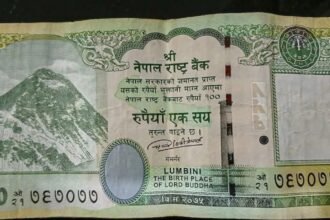The fire that raged through the serene valleys of the Himalayas this September didn’t just incinerate Nepal’s decades-old political establishment; it sent a tremor through the corridors of power across South Asia. This was the ‘Gen-Z Revolution’ a youth-led explosion sparked by a social media ban that quickly morphed into a raging inferno against corruption, nepotism, and economic despair. The uprising brought the government in Kathmandu to its knees, forcing the Prime Minister and President to resign and compelling the army onto the streets. But as Nepal grapples with its most significant political upheaval, an unavoidable question is being asked in India, the country with the world’s largest youth population: Could this Himalayan fire cross the border?
The Himalayan Inferno: Anatomy of a Youth-Quake
The Nepalese rebellion was not a sudden event. It was the eruption of decades of simmering discontent born from the chasm between the aspirations of its youth and the failures of its political class.
The Spark and the Fuel: When the government banned 26 social media platforms on September 8, 2025, it was the final crack in a dam of patience. The ban wasn’t just an assault on internet freedom; it was the snatching of the primary voice and window to the world for a generation that felt trapped in a broken system.
The real fuel had been accumulating for years:
- Systemic Corruption: Which had hollowed out the nation’s resources.
- The ‘Nepo-Kid’ Culture: Where political and economic opportunities were reserved for the children of influential families who shamelessly flaunted their wealth on social media.
- Economic Despair: With a youth unemployment rate hovering around 21% and an economy where one-third of the GDP depends on remittances, there was no future for the youth at home.
Protests that began for internet restoration quickly evolved into a roar for systemic change. It was a leaderless movement, empowered by civil society organizations like ‘Hami Nepal’ and figures like Sudan Gurung, but its true strength lay in its decentralized and organic nature. The flag of the “Straw Hat Pirates” from the popular anime One Piece became a symbol of the rebellion—a distinctly youth-driven signal of revolt against the establishment. The government’s violent response, which led to the deaths of over 19 protestors, only added fuel to the fire, ultimately leading to the collapse of the establishment.
The Indian Paradox: A Demographic Dividend on the Brink?
On the surface, India appears vastly different from Nepal. It is a massive, more diverse, and economically powerful democracy. Its Gen-Z population of 377 million is not just a demographic statistic; it’s a colossal consumer force driving the nation’s economy. They are economically active, digitally savvy, and connected to global trends.
Yet, beneath the surface, the same frustrations that fueled the Nepal explosion are simmering:
- Economic Insecurity: Surveys from Deloitte reveal that many young Indians are living “paycheck-to-paycheck” and are deeply worried about the cost of living.
- The Unemployment Crisis: While official data may paint a different picture, youth unemployment remains a grave concern. The lack of meaningful employment despite good education is breeding disillusionment.
- Systemic Disenchantment: Like in Nepal, youth in India are frustrated with corruption and the perceived inefficiency of the political class.
The Indian youth’s mode of protest, however, is different. Their activism is predominantly digital. They mobilize online for causes like social justice, gender equity, and climate change. Recent youth protests in India, whether in universities or against specific policies, have often been localized and issue-focused—a stark contrast to the nationwide, anti-system revolt in Nepal.
Ironically, the very social media whose ban triggered the revolution in Nepal may be acting as a “pressure valve” in India, providing a platform for youth to vent their frustrations.
Comparative Analysis: Can the Fire Cross the Border?
Experts believe that a direct replication of the events in Nepal is unlikely in India in the immediate future. The reasons are many: India’s vast size and diversity, the relative strength of its democratic institutions, and the localized nature of its protests.
But the revolution in Nepal serves as a profound warning for India. Political commentators, such as in the Shiv Sena (UBT) mouthpiece ‘Saamana’, have explicitly warned that India must learn a lesson from Nepal, as the fire of unemployment and hunger cannot be ignored for long.
Nepal has demonstrated that Gen-Z is no longer a silent spectator. They are a political force, capable of organizing digitally and challenging the status quo. They have shown that when a generation feels it has nothing to lose, it is willing to risk everything.
Conclusion: A Stark Warning for New Delhi
What happened in Nepal is not merely a crisis in a neighboring country; it is a glimpse into a future that could unfold if a nation’s greatest asset—its youth—is taken for granted. India’s “demographic dividend” is its biggest strength, but it is also a double-edged sword. If millions of educated, ambitious, and digitally-connected young people are not provided with meaningful opportunities, their energy and frustration could easily curdle into instability.
The ‘Gen-Z Revolution’ of Nepal is a wake-up call for New Delhi and every South Asian capital: listen to your young generation, address their grievances, and give them a genuine stake in the future. Failure to do so could turn today’s demographic dividend into tomorrow’s demographic disaster.















